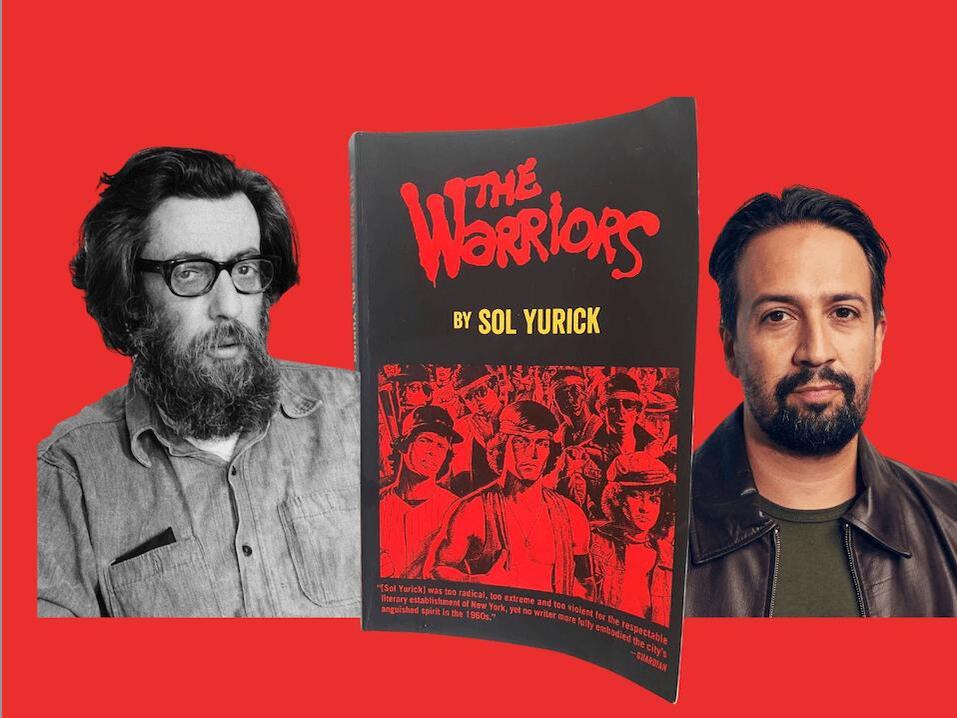Physical Address
304 North Cardinal St.
Dorchester Center, MA 02124
Physical Address
304 North Cardinal St.
Dorchester Center, MA 02124

Among the colorful characters in The Warriors, Sol Yurick’s 1965 novel of a gang’s overnight journey through New York, one name stands out: Mannie Bernstein. While Hinton, The Junior, Lunkface, and Bimbo tend to blur together, Bernstein leaps off the page.
Bernstein, a minor character in Yurick’s saga based on Xenophon’s Anabasis, is a social worker assigned to monitor a group of juvenile delinquents. Like Yurick, Bernstein appears Jewish and is a close observer of the disadvantaged.
Many who know The Warriors through Walter Hill’s cult classic 1979 film or Lin-Manuel Miranda and Eisa Davis’ new concept album may not realize that Yurick’s original story drew from his own experiences as an investigator for New York City’s Department of Welfare. He encountered numerous families with kids in fighting gangs.
“I came in contact with, as it were, the lower social and economic depths,” Yurick wrote in a 2003 edition’s afterword. “I went through a kind of social shock.” Yet, it was hardly his first such experience.
Born Jan. 18, 1925, to Sam, a milliner from outside Kiev, and Florence, from Lithuania, Yurick grew up in Co-op City in the Bronx. His parents were communists, although they carried no official membership. During the Depression, they were among the first to collect welfare.
“They used to come and look at your cabinets and say, ‘You have food in your refrigerator. I don’t think you need us anymore,’” recalled Yurick’s widow, Adrienne, a potter and ceramics teacher. “Sol was quite the opposite with his clients.”
Yurick’s first language was Yiddish, but on entering kindergarten, he told his mother that if she spoke it to him, he wouldn’t answer.
From early on, Yurick’s interests were far-reaching. One day in elementary school at P.S. 76, he was secretly reading Darwin behind his geography book. When his teacher discovered this, she exclaimed, “Of all the monumental gall,” a saying that became an inside joke between Yurick and his wife.
Yurick was always tall for his age and had few friends. However, he was an avid reader who was allowed to use the adult section of the library.
At home, communism and global revolution were regular topics of discussion. However, Yurick broke from his parents in 1939 over the Molotov-Ribbentrop pact, an alliance between the Nazis and the Soviet Union, stating his “feelings as a Jew were more important than my feelings as a communist.”
“He thought he was apolitical for a long time, but he never really was,” Adrienne Yurick noted. “Everything he did had a political component.”
Yurick enlisted in the Army out of high school in 1944. During his service, he may have first experienced “a sense of otherness” as a Jewish kid from New York, a feeling present throughout his work.
Attending New York University on the GI Bill, Yurick eventually studied literature. He lived in a cold-water flat on Morton Street. He didn’t pinpoint exactly when he decided to transpose modern-day gangs onto Xenophon’s classic, but the idea had been in his head for years before he wrote it in three weeks, following 27 rejections for his first novel, Fertig.
Fertig, about a man taking revenge after his child dies due to medical negligence, was written for Yurick’s master’s thesis at Brooklyn College. However, The Warriors, his so-called “potboiler,” came out first.
Those only familiar with the movie might be shocked by the extreme, unflinching violence in Yurick’s book. The Coney Island Dominators, consisting of Black and Latino youths, reflect not just territorial divisions but also ethnic ones.
These youths come from dysfunctional households and find surrogate families within their gang hierarchy. They murder a bystander, commit gang rapes, and patronize sex workers in Times Square bathrooms. Yurick makes these criminal youths somewhat sympathetic by depicting a city whose lawful side is equally corrupt, with racist cops eager to brutalize them.
“Coming from a communist background and being a Jew added to my sense of alienation from American life,” Yurick wrote. “To me, being a writer was like being a rebel. I’ll show you what your world is really like. What of the gangs? Theirs, too, was a form of revolt.”
Yurick felt this “revolutionary content was missing” from Hill’s film, which he publicly criticized. “I looked for my novel on the screen; I found the skeleton of it intact,” he wrote.
By 1979, when Hill’s adaptation led to a reissue of The Warriors, Yurick had moved beyond Anabasis, publishing The Bag and the short story collection Someone Just Like You. These works were vehemently critical, prompting one critic to comment on the brutality depicted in his tales.
At home in Park Slope, Yurick held court, entertaining friends with his humor. He often discussed various topics, from metaphysics to information technology and ancient history.
His last novel, Richard A., made bold predictions about man’s relationship with technology. Adrienne Yurick described it as cold but undeniably prescient.
Yurick adaptations haven’t always fared well. Hill’s film airbrushes The Warriors into camp, stripping away much of its social commentary. The Confession, based on Fertig, turns the novel’s act of vengeance into a morality play. Though, would Yurick appreciate Lin-Manuel Miranda’s concept album based on The Warriors?
Fromartz speculated that Yurick might appreciate Hamilton for its blending of genres, even if he had issues with its politics. Adrienne Yurick suggested he’d be dubious but might agree to it.
It’s no surprise Miranda might be attracted to the material. Yurick believed musicals like West Side Story took liberties with gang dynamics. However, Bernstein’s play was a massive success. Miranda, a native New Yorker blending diverse music genres, likely saw the theatrical potential in Yurick’s book.
Miranda, whose greatest protagonist “wrote his way out” of his dilemmas and who used Hamilton’s biography to advocate for immigrants and the disenfranchised, may have found a connection in Yurick’s approach to advocacy.
“His work was his contribution. He was not an activist,” Adrienne Yurick said. “But he wrote.”
Source: New York Magazine



